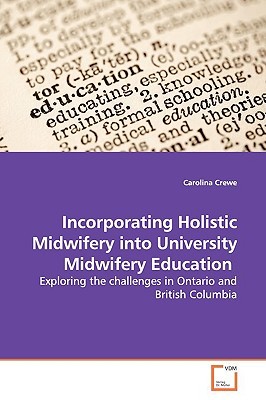
- We will send in 10–14 business days.
- Author: Carolina Crewe
- Publisher: VDM Verlag
- ISBN-10: 3639153049
- ISBN-13: 9783639153040
- Format: 15.2 x 22.9 x 1 cm, minkšti viršeliai
- Language: English
- SAVE -10% with code: EXTRA
Incorporating Holistic Midwifery into University Midwifery Education (e-book) (used book) | bookbook.eu
Reviews
Description
The development of University Midwifery Education Programs (UMEPs) has been a key component of the midwifery professionalization process in Ontario and British Columbia. The choice to develop UMEPs has set a standard for professional midwifery training. The goal of this study is to highlight the gendered struggles of midwifery, as a female dominated and historically marginalized occupational group, in its attempt to integrate into pre-existing hierarchies of the university structure. Specific challenges of this process include tensions around inter-professional collaboration and faculty sharing with dominant disciplines such as Health Sciences and/or Medicine, enculturation of masculine/feminine professional characteristics, struggles to value practicum learning components, visibility/obscurity within the university, struggles for achieving diversity in the student/client population, gendered dimensions of earnings potential and labour im/mobility. Similarly located marginalized groups attempting integration into a university structure are likely to experience similar exclusionary measures related to factors including gender, sexuality, ethnicity and race.
EXTRA 10 % discount with code: EXTRA
The promotion ends in 23d.14:14:37
The discount code is valid when purchasing from 10 €. Discounts do not stack.
- Author: Carolina Crewe
- Publisher: VDM Verlag
- ISBN-10: 3639153049
- ISBN-13: 9783639153040
- Format: 15.2 x 22.9 x 1 cm, minkšti viršeliai
- Language: English English
The development of University Midwifery Education Programs (UMEPs) has been a key component of the midwifery professionalization process in Ontario and British Columbia. The choice to develop UMEPs has set a standard for professional midwifery training. The goal of this study is to highlight the gendered struggles of midwifery, as a female dominated and historically marginalized occupational group, in its attempt to integrate into pre-existing hierarchies of the university structure. Specific challenges of this process include tensions around inter-professional collaboration and faculty sharing with dominant disciplines such as Health Sciences and/or Medicine, enculturation of masculine/feminine professional characteristics, struggles to value practicum learning components, visibility/obscurity within the university, struggles for achieving diversity in the student/client population, gendered dimensions of earnings potential and labour im/mobility. Similarly located marginalized groups attempting integration into a university structure are likely to experience similar exclusionary measures related to factors including gender, sexuality, ethnicity and race.


Reviews